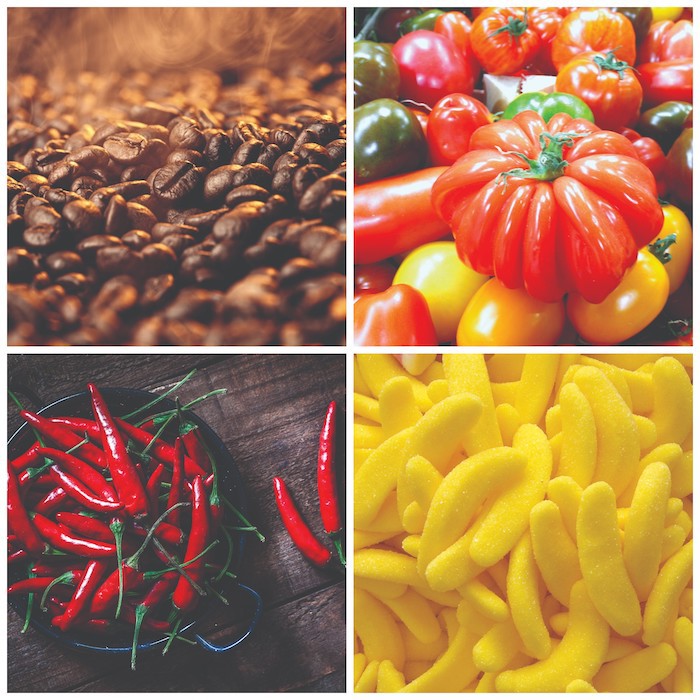
Stuart Bale explains the intricacies of using solvents to enhance flavour, aroma and texture.
At the root of every decision you make when infusing, washing, steeping or extracting using solvents (liquids you can dissolve something into) is one fundamental principle: polarity. You don’t need to remember your GCSE chemistry to get your head around this. Just remember that polar solvents (like water) dissolve polar compounds. Non-polar solvents (such as fats/ oils) dissolve non-polar compounds. And ethanol, because it has both, is the best of both worlds.
Water – polar
Water gets overlooked because it’s everywhere. But from a flavour extraction perspective, it’s a beast. It’s extremely polar, cheap, safe, and can be manipulated with heat, time and concentration. Water molecules are bent and asymmetrical – the result: it’s excellent at pulling out ions, acids, sugars and anything with a polar handle. If you’ve ever brewed tea, made stock, or soaked dried mushrooms, congratulations – you’ve done a polar extraction.
Fats and oils – non-polar
Fats and oils are a bit different. They don’t punch you in the face like acid or alcohol, but work in a very different way: they absorb flavour and hold on to it. Being non-polar, they are great at grabbing oily, aromatic, volatile compounds – the stuff that actually smells like what it is. As a bonus, you can perform these extractions without heat, so delicate, volatile aromas survive intact. The payoff is texture, aroma, mouthfeel and a whole new world of silky infusions.
You should also know that fat molecules don’t have charged poles, so they don’t interact well with water-based or polar compounds. But give them a molecule with a hydrocarbon tail – like most terpenes, essential oils and a ton of aromatics – and they’re all over it. This is why fat-washing works. The spirit pulls flavour from the fat, not the other way round. You get the aroma and creamy texture, without having to chew your drink.
Alcohol – polar and non-polar
Ethanol is a weird and wonderful thing. It’s got one end that loves water (polar) and one that loves oil (non-polar), which means it can mingle with all kinds of flavour compounds. Water and oil both dissolve in it, though not at the same time, so it’s one of the few solvents that can pull flavour from opposite ends of the chemical spectrum. That’s why booze is such a good flavour tool. It extracts aroma (which tends to be non-polar) and taste (mostly polar), which is crucial for bartenders.
For better extraction, use diluted ethanol. Around 40-50% abv works best. Go stronger and you’ll start pulling out too many bitter or astringent compounds. Plus, in many countries, you’re not legally allowed to buy or use higher-proof ethanol for food and drink. Tech-grade ethanol is denatured, and the lab stuff requires paperwork. So for practical reasons, stick to vodka strength.
Vinegar – polar and mild non-polar
Acetic acid is polar, like water, but also has a hydrophobic carbon tail, so it’s a little bit of a hybrid. Not as versatile as ethanol, but it can pull flavour from polar organic acids, amino acids, short-chain esters, fruit, herbs, roots, barks, pickles – you name it.
It’s also highly acidic. That low pH is great for preserving and stabilising delicate ingredients, and it can unlock brightness, funk and complexity without overpowering sweetness or structure. You can use it in tinctures where you’d normally reach for high proof alcohol, particularly if you want the extraction to be safe, booze-free and shelf-stable.
POLAR FLAVOUR COMPOUNDS
Here’s a rough breakdown of flavour compounds that are polar, and therefore work well with water and ethanol.
Aromatics and phenolics
These are the punchy top notes: green, spicy, herbal.
• Eugenol: clove, cinnamon – slightly polar.
• Vanillin: vanilla – classic polar flavour molecule.
• Caffeic acid: found in coffee and wine – earthy and bitter.
• Capsaicin: the spicy bit in chilli – polar head, non-polar tail. That’s why chilli water isn’t very spicy, but an ethanol tincture or chilli oil will melt your face off.
Amino acids and peptides
These give you that deep, rounded, umami flavour like stock or soy sauce.
• Glutamic acid: the king of umami. Found in aged cheese, tomatoes, kombu.
• Peptides: formed in fermentation and ageing, bringing complexity and funk. Short-chain esters These are the fruity-floral volatiles that make things smell bright and juicy.
• Ethyl acetate: pear skin, nail varnish remover, rum.
• Isoamyl acetate: artificial banana.
Just to complicate things, of course temperature, time and concentration all play a role. But as a rule of thumb, if you know whether a flavour is polar or not, you’ve got a head start on how to extract it, and which solvent will do the job best.
NON-POLAR FLAVOUR COMPOUNDS
If it tastes fatty, floral, spicy, earthy, oily, or roasted, it’s probably non-polar. These love fats and oils.
Terpenes
Bright, floral, citrusy, piney, sometimes funky. Found in: citrus peels, herbs, cannabis, hops.
• Examples: limonene (lemon, orange), myrcene (mango, bay leaf, thyme), pinene (pine, rosemary).
Long-chain fatty acids and lipids
Rich, fatty, creamy, sometimes nutty. Found in butter, cream, meat fat, nuts.
• Examples: oleic acid, linoleic acid, stearic acid.
Alkyl pyrazines
Roasted, nutty, toasted flavours found in roasted coffee, cocoa, grilled meats, peanuts.
Carotenoids
Provide colour and earthy/sweet flavour. Found in carrots, tomatoes, red peppers.
• Examples: beta-carotene, lycopene.


